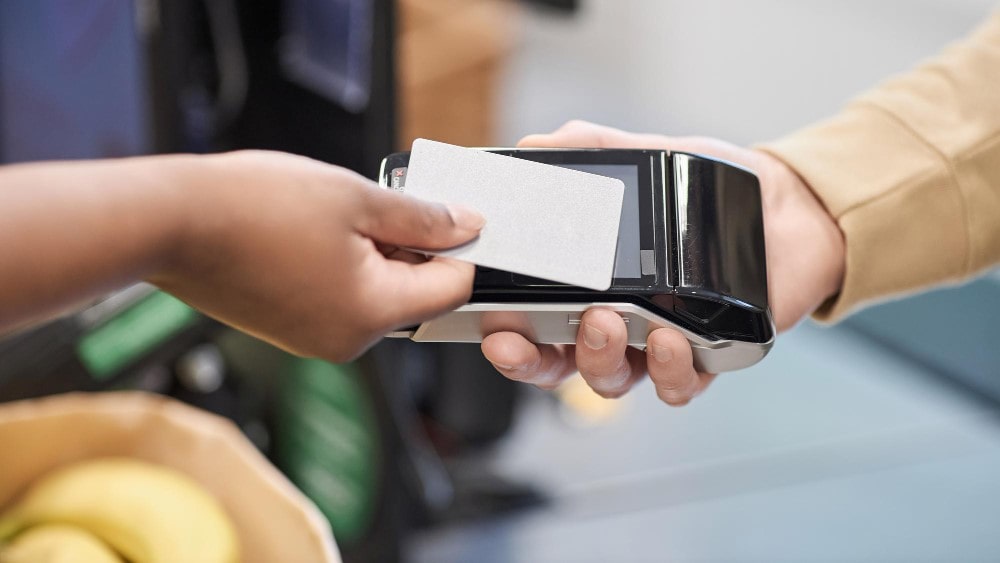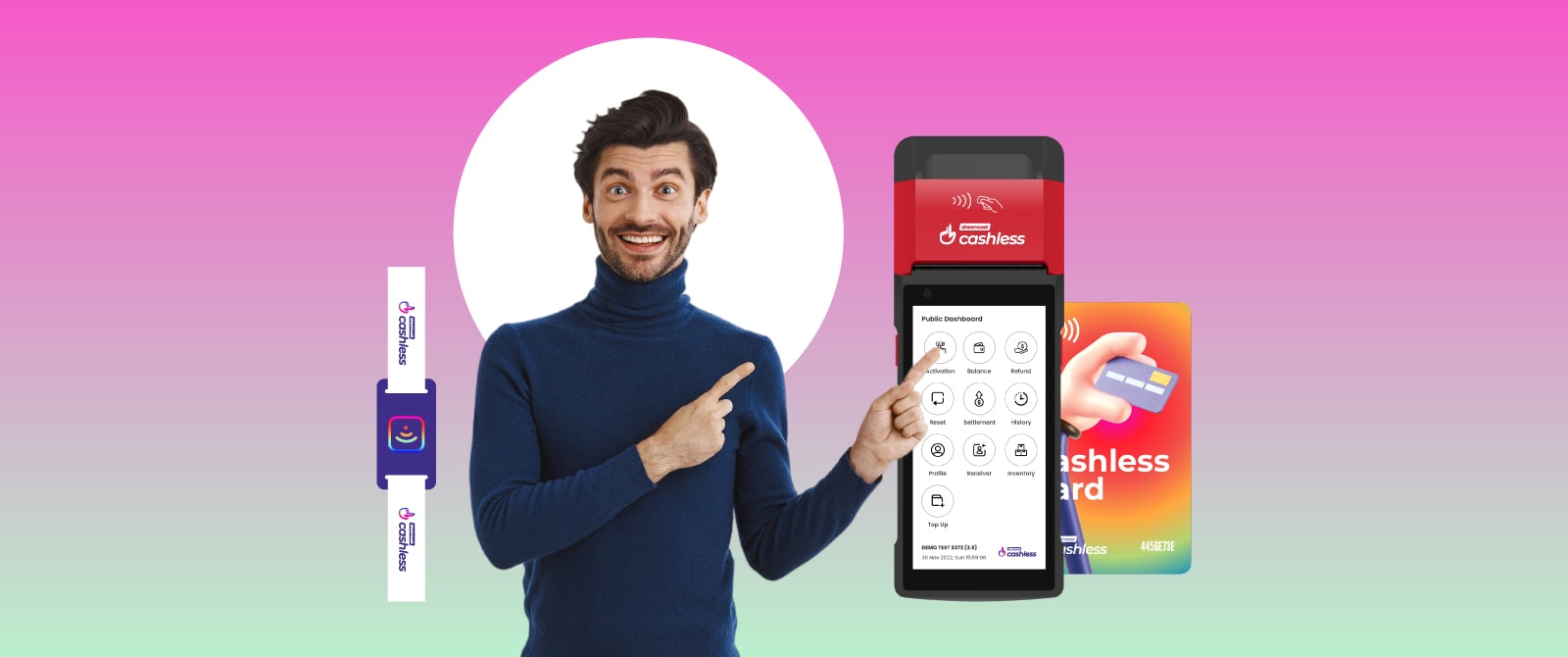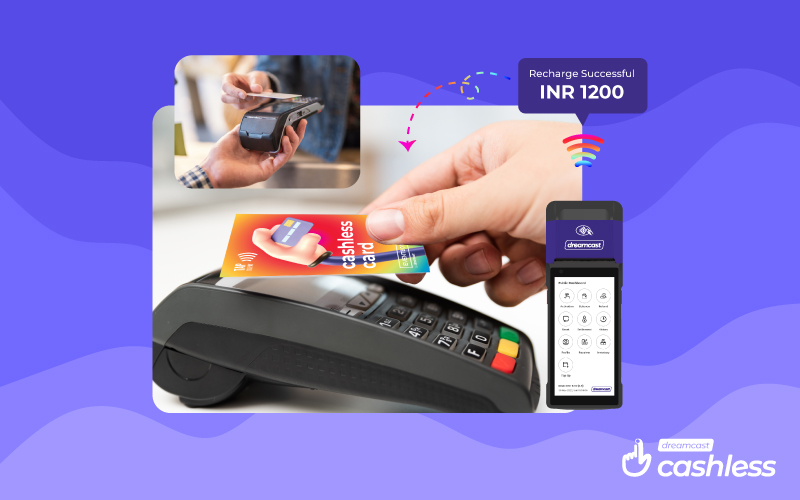In today’s digital age, the demand for smooth and efficient payment solutions at events has become increasingly important. One innovative approach that has gained significant traction is the adoption of cashless RFID payment systems. These systems offer a number of benefits, including a better customer experience, better security, and smoother transaction management. In this comprehensive article, we will explore the steps to successfully implement RFID cashless payment at your next event.
Understanding RFID Cashless Payments

RFID cashless payment systems are based on radio frequency technology that allows participants to complete purchases and transactions without cash or physical payment cards. Participants are typically issued RFID wristbands, cards, or tags associated with their payment information that allow them to make purchases by simply tapping or swiping their RFID device at designated payment terminals.
The key advantages of RFID cashless payments include:
Improved Convenience: Attendees no longer need to carry cash or search, as all their payment needs can be fulfilled with a simple touch or wave of an RFID device.
Enhanced Security: Cashless RFID systems eliminate the risk of money being lost or stolen, reducing the possibility of fraud and theft.
Faster Transactions: RFID payments are typically much faster than traditional cash or card transactions, which shortens queues and improves transaction flow.
Extensive event data: RFID systems can provide event organizers with valuable information such as buying patterns, popular sellers, and attendee behavior that can be used to optimize future events.
Implementing RFID Cashless Payments

Implementing RFID cashless payments at your event involves several key steps. Let’s dive into the details:
1. Choose the Right RFID Provider
Select an experienced and reputable RFID service provider that can offer a comprehensive solution tailored to your event’s needs. Consider factors such as the provider’s track record, the reliability of their technology, and their customer support services.
2. Determine the RFID Infrastructure
Assess the layout and size of your event venue to determine the required RFID infrastructure, including the number and placement of payment terminals, RFID readers, and antennas. This ensures seamless integration and coverage across the event space.
3. Integrate with Existing Systems
Integrate a cashless RFID payment system into your event’s existing ticketing, registration, and vendor management systems. This ensures a smooth and seamless experience for both attendees and event staff.

4. Develop a User-Friendly Interface
Create a user-friendly interface for attendees to manage their RFID accounts, check balances, and top up their accounts. This can be achieved through a mobile app, a web portal, or dedicated kiosks at the event.
5. Educate and Train Event Staff
Ensure that your event staff is well-versed in the RFID cashless payment system, including how to assist attendees, troubleshoot issues, and manage the payment terminals. Provide comprehensive training to ensure a seamless experience for both staff and attendees.
6. Communicate with Attendees
Clearly communicate the RFID cashless payment system to your attendees before and during the event. Provide detailed instructions on how to obtain and use their RFID devices, as well as any necessary information about account management and top-up options.
7. Implement Security Measures
Establish robust security measures to protect attendee data and prevent unauthorized access to the RFID system. This may include features such as encryption, access controls, and fraud detection mechanisms.
8. Monitor and Optimize the System
Continuously monitor the RFID cashless payment system during the event, addressing any issues or bottlenecks that may arise. Collect feedback from attendees and event staff to identify areas for improvement and optimize the system for future events.
Learn more: How Cashless Payment Systems Improve Inventory Management
Best Practices for RFID Cashless Payments

To ensure the successful implementation of RFID cashless payments at your event, consider the following best practices:
Seamless Onboarding: Provide a streamlined onboarding process for attendees to obtain and activate their RFID devices, ensuring a smooth start to their event experience.
Flexible Top-Up Options: Offer multiple ways for attendees to top up their RFID accounts, including online, at dedicated kiosks, or through event staff, to cater to different preferences and needs.
Clear Refund Policies: Establish and communicate clear policies regarding the refund or transfer of unused RFID funds, providing attendees with the necessary information and assurance.
Comprehensive Data Analytics: Utilize the data generated by the RFID cashless payment system to gain insights into attendee behavior, purchasing patterns, and vendor performance, which can inform future event planning and optimization.
Seamless Integration with Vendors: Ensure seamless integration between the RFID system and your event’s vendors, allowing for efficient and hassle-free transactions.
Backup Payment Options: Maintain alternative payment options, such as cash or traditional card payments, to accommodate attendees who may not have or prefer to use the RFID system.
Continuous Improvement: Regularly review and update the RFID cashless payment system, incorporating feedback and implementing enhancements to provide an improved experience for future events.
Learn more: A Complete Guide to POS Cashless System For Events
Final Words
Implementing RFID cashless payments at your event can revolutionize the way attendees engage with your offerings and vendors. By providing a convenient, secure, and data-driven payment solution, you can enhance the overall event experience, increase operational efficiency, and unlock valuable insights to drive future success. By following the steps and best practices outlined in this article, you can successfully implement RFID cashless payments and take your event to new heights.
FAQs
Event organizers can monitor RFID transactions in real-time through a centralized dashboard provided by the RFID technology provider. This dashboard provides insights into sales trends, transaction volumes, and attendee spending patterns.
Attendees experiencing issues with RFID cashless payments should seek assistance from event staff or designated support personnel. Staff members are typically trained to troubleshoot common issues and provide solutions to ensure a smooth payment experience.
Yes, RFID cashless payments are secure. RFID technology uses encrypted communication protocols to protect transactions from unauthorized access. Additionally, attendees can typically report lost or stolen RFID devices to deactivate them promptly.
Event organizers can promote RFID cashless payments through pre-event communications, including email newsletters, social media posts, and event websites. Providing clear instructions and benefits of using RFID payments can encourage attendee adoption and participation.
RFID cashless payments utilize Radio Frequency Identification (RFID) technology to enable attendees to make transactions using RFID-enabled wristbands, cards, or badges. These devices are linked to attendees’ accounts and can be used to make purchases without cash or physical tokens.






